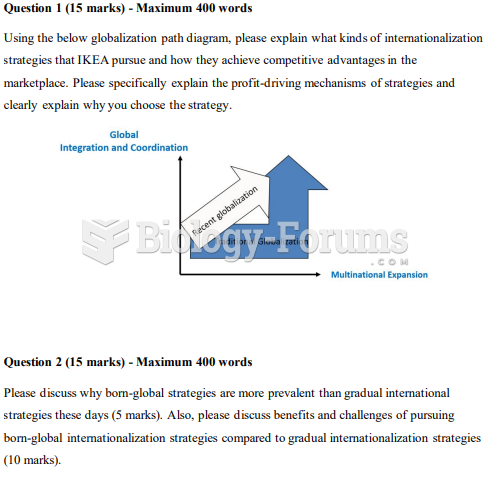Answer to Question 1
Coordinating a complex IBP effort is a challenge for any organization. The chief problem in achieving coordination is that there can be an incredible lack of alignment around who is responsible for achieving the integration. The question involves whether the client or the agency should accept this responsibility. Ad agencies often see themselves in this lead role of architect and general contractor, but not many have demonstrated great success in this area.
As advertising has become more complex, organizations have often become reliant on functional specialists. Specialists, by definition, focus on their specialty and can lose sight of the big picture and the efforts of others in the organization. Specialists also want their own budgets. Internal competition for budget dollars often yields rivalries and animosities that work against coordination.
Few ad agencies have all the internal skills necessary to fulfill clients' demands for integrated marketing communications today. For example, interactive media often require special skills that are not held by most traditional ad agencies. Therefore, external sources must be used. External contractors often do not understand the overall strategy of the IBP effort. And the greater the number of external organizations delivering messages to potential customers, the greater the coordination challenge.
Most importantly, the main objective underlying the need for coordination is to achieve a synergistic effect for a consistent brand meaning.
Answer to Question 2
After World War II, American business had great faith in what science could do, while at the same time American consumers felt an underlying concern about its manipulation for evil ends rather than for the public good.
As for the industry, the 1950s was the heyday of marketing research. Some
companies had already had research specialists for a hundred years, but now even the average firm felt the need to create an expansive research department for three basic reasonsthe popularity of anything related to science the birth of research departments at other agencies; and the real need to understand how ads worked. An economic boom, a focus on consumption, and a need to understand persuasion
allowed agencies the luxury of demanding more psychological research, more motivational theories, more hidden meanings. Research became legitimatized and respected in the industry.
As for universities, they embraced science and experimentation as the only way to understand persuasion, forming advertising departments and teaching courses during this time. And they began to turn out persuasion experts trained to advise the creatives on Madison Avenue.
For consumers, things were different. On the surface there was a public adoration for all things scientific and technologicaleven reflected in books, plays, and movies but also a focus on repressed subconscious and Freudian analysis. World War II propaganda had proven that the science of persuasion existed and could be exploited. There was real concern about mind-control techniques, subliminal methods, and hidden forms of mass persuasion that could now be used by Madison Avenue. Consumers were scared by the Cold War, the advancement of communism, the very real possibility of nuclear attack. Advertisers took advantage of these fears, a lesson that still applies and still influences many forms of promotion today. If consumers feel an underlying anxiety or fear, advertisers will use that anxiety or fear to sell products.
By the 1980s, agencies began to voice their mistrust in these long-held research methods.Too often, research had asked the wrong questions, used inappropriate methods, or misinterpreted findings.
In the past decade, many agencies have considered research to be a luxury or an unnecessary element. Many have closed their departments, replacing them with account planning departments or contracting out research services only when needed. And now they are looking for qualitative information based on real-life use of the product, not quantitative data based on columns of numbers. Overall, quantitative research is seen as irrelevant or only rarely needed. And with the explosion of nontraditional sources of promotion and new forms of media, it is becoming even
more rare.







